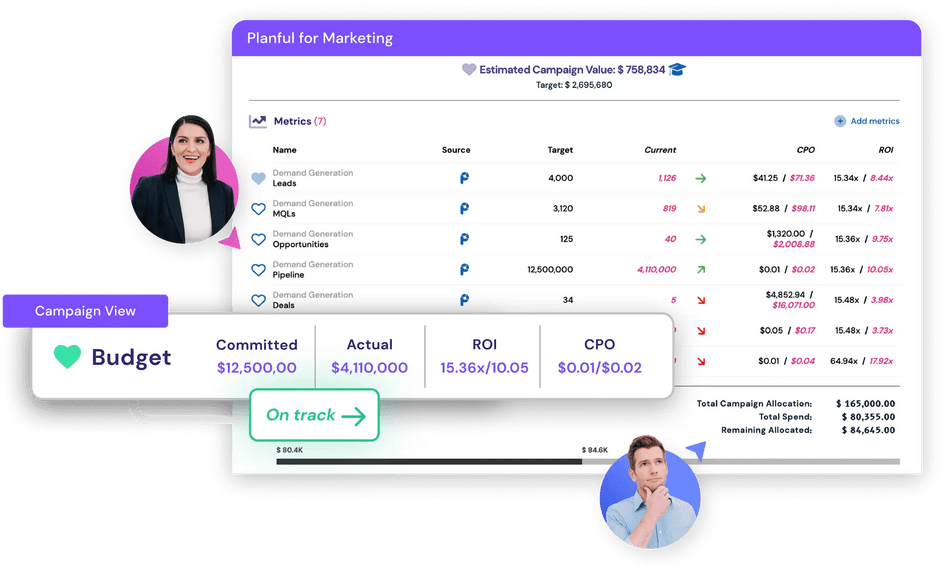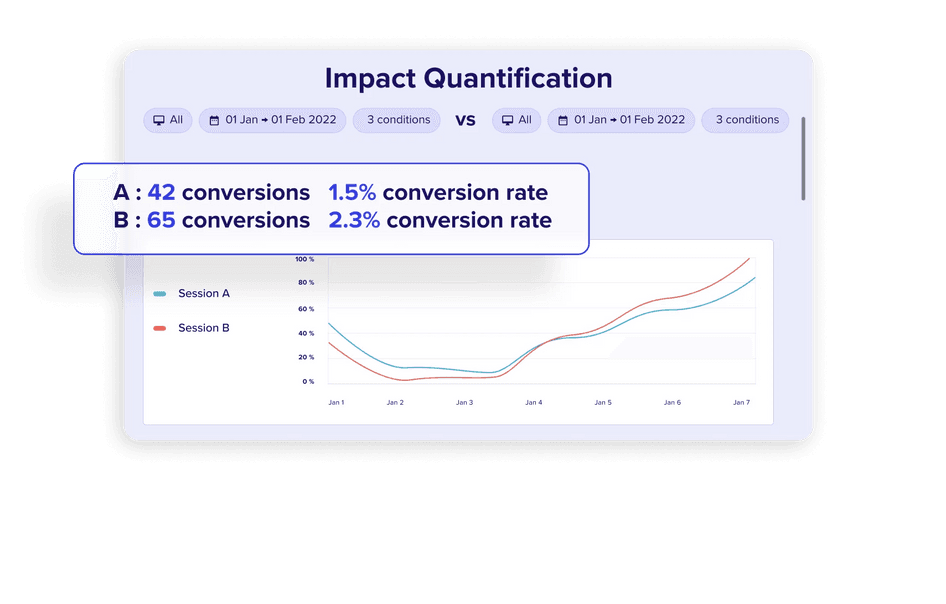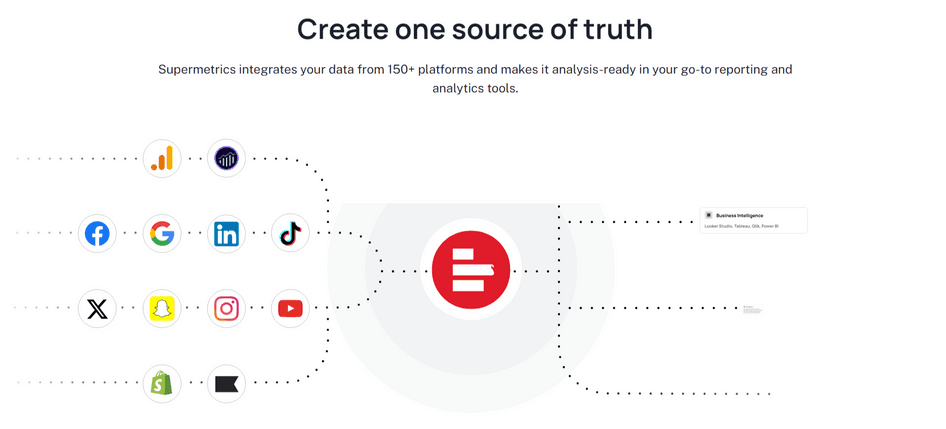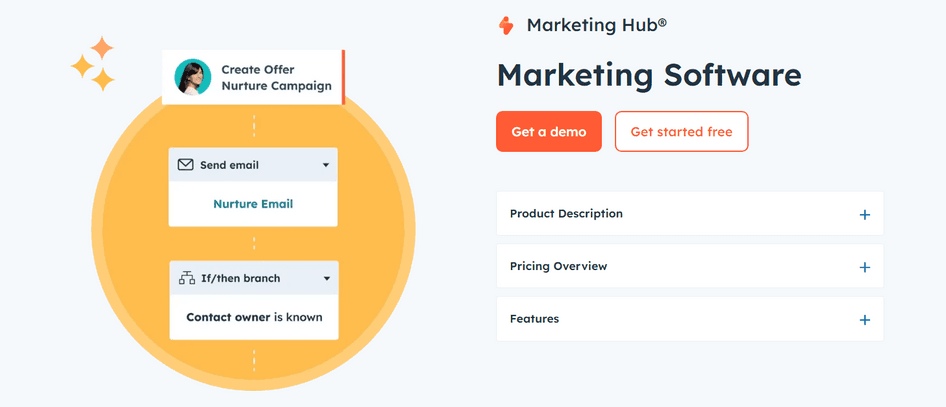Reflecting on my business path, I recall the moment when I learned the true value of ROI tracking. A key campaign for a small customer demonstrated to me how precisely tracking return on investment (ROI) might make or break a plan. In this post, we will look at the tools and tactics that make ROI tracking straightforward, with a focus on information that most websites do not provide.
What is ROI Tracking?
ROI, or Return on Investment, is a critical indicator for determining the profitability of an investment. Essentially, it assists firms in understanding the effectiveness of their expenditures by comparing the returns generated to the costs incurred. According to a HubSpot analysis, firms that efficiently analyze ROI are 1.6 times more likely to acquire larger budgets for marketing campaigns.
Why ROI Tracking is Important
In my experience, effective ROI tracking has helped to justify marketing spend and optimize future initiatives. For example, during a marketing makeover for a tech startup, detailed ROI tracking enabled us to identify the most cost-effective channels, resulting in a 40% boost in overall campaign efficiency.
Strategies for Effective ROI Tracking
#1. Set clear objectives
Before you begin tracking, establish clear, measurable goals. This phase ensures that you understand what success looks like and can customize your tracking efforts accordingly.
- Example: When we launched a new product, our goal was to grow sales by 20% in the first quarter. By identifying this goal, we could concentrate our tracking efforts on the variables that mattered the most.
#2. Use Multi-Touch Attribution
Single-touch attribution models frequently underestimate the complexity of customer journeys. Multi-touch attribution offers a more complete picture by crediting several touchpoints along the buyer’s journey.
- Example: After implementing a multi-touch attribution model, we discovered that social media ads played a big impact in the early phases of our client acquisition funnel, allowing us to better allocate cash.
#3. Regularly review and adjust
ROI tracking is not something you can do once and forget about. Review your analytics regularly and alter your plans in response to the insights gathered.
- Example: During a quarterly evaluation, we discovered a decrease in ROI from PPC advertising. A more thorough examination indicated more competition and higher CPCs, prompting us to revise our keyword approach and improve ad relevancy.
Step-by-Step Guide For Tracking ROI in Your Campaigns
Starting to track ROI for your campaigns may appear difficult, but with a disciplined strategy, it becomes straightforward and quite valuable. Here’s a step-by-step tutorial to get you started:
#1. Choose the marketing channels and metrics to track.
Each marketing channel, such as organic search or social media, provides unique data to assist you in determining your ROI.
We’ll go over each channel and the data to track momentarily, but first, let’s look at the four basic KPIs you should track for every marketing channel:
- Sales: Keep note of how many sales (along with their dollar value) each channel generated.
- Cost: Limit your overhead expenditures to solely the quantity of products sold through each marketing channel, excluding any funds spent on other marketing channels.
- Conversion rate: Knowing the conversation rate of each channel allows you to determine which channels to invest in more and which ones require improvement.
- Consumer Lifetime Value (CLV): CLV is the total amount a consumer is likely to spend at your store during their whole ‘lifetime’ as a customer, not just the first purchase. For example, customers who find you on social media may become repeat buyers, purchasing an average of $1,000 in products over their ‘lifetime.’ Including CLV in your ROI calculations helps you understand which marketing channels are likely to generate the highest long-term profit.
Aside from these fundamental indicators, here are some more to consider tracking for various ecommerce marketing channels:
Paid Advertising
Paid advertising, such as sponsored search and social media ads, allows you to reach a specific audience.
However, poor-performing ads can quickly eat into your return on investment, therefore you should additionally track indicators such as:
- Click-through rate (CTR): A high CTR indicates that your ad is appealing to your target demographic (and may convert). However, the CTR does not provide the complete picture. If CTRs are high but conversions are low, there may be issues with your sales page that are preventing consumers from converting.
- Cost per Click: Lower cost per click (CPC) can increase your return on investment and typically indicate that your creatives, such as text and media, are effective with your target demographic.
- Return on ad spend (ROAS): ROAS calculates the revenue gained for every dollar spent on advertising and can help you determine whether your campaign is functioning well.
Email Marketing
Your email list provides direct access to potential prospects and current clients. Keep track of metrics such as:
- Click-through rate (CTR): A higher CTR indicates that more recipients are clicking on to your website via email, boosting the likelihood of conversions and enhancing ROI.
- Unsubscribe rate: A low unsubscribe rate implies that your emails are useful to subscribers. Combine unsubscribe rates with metrics such as CTR and conversion rate to determine whether your list is ready to buy. poor unsubscribe rates combined with poor conversion rates may indicate that your emails are reaching your target audience, but they are not yet ready to buy.
- Revenue per email: Higher revenue per email implies that your email campaigns are increasing sales and ROI.
Search Engine Optimization
SEO is frequently an important component of a content marketing strategy, but allocating funds to organic search efforts can be difficult. The following metrics can help:
- Organic traffic: increasing organic traffic indicates that more potential consumers and leads are accessing your website without paying for it, which can boost ROI.
- Engagement rate: Your site’s engagement rate defines how interested users are in your content. Low engagement rates may result in low conversions (which may reduce your ROI). Aim for a high engagement rate to keep users satisfied and on your site for longer.
- Session duration: The average session time provides insight into how visitors interact with your site. Short sessions combined with poor engagement rates may indicate a gap between what searchers want and what you give, lowering your ROI.
- Pages per session: More pages per session indicate more engagement on your site, which can lead to conversions such as leads or purchases.
Affiliate (Influencer) Marketing
Affiliate links and influencer codes are a simple method to associate financial value with these brand partners. Other indicators might also assist you in understanding how affiliate campaigns affect your return.
- Affiliate traffic: More traffic from affiliates increases the likelihood of conversions, which can boost ROI.
- Active affiliates: calculating the percentage of active affiliates allows you to determine how many affiliates actively send referrals. And determine whether your affiliate program is a valuable asset.
Social media marketing
The names of these metrics may change based on the social platforms you utilize, but in general, there are a handful you can consider tracking:
- Impressions: More impressions can raise brand awareness, resulting in more traffic and sales, hence improving ROI.
- Engagement rates: High engagement rates (likes, comments, shares, etc.) indicate that your content is engaging with your audience, which could lead to more conversions and a higher return.
- Click-through rate: A greater CTR indicates that your social media material is attracting traffic to your website, thereby enhancing ROI.
#2. Define your KPIs and select appropriate measurements
KPIs (key performance indicators) are directly related to one or more of your company’s goals.
For example, your KPI could aim to boost ROI from social media by 10% month after month.
So, your first duty is to determine your ROI KPIs.
Then, you’ll need to select—and track—metrics for each KPI to determine what’s working (and what’s not) in terms of reaching your KPIs.
If we look back at our previous social media KPI example, some metrics we could want to track include conversion rate, sales, cost, CLV, engagement rate, and click-through rate. Combining numerous metrics provides a greater insight of how each channel contributes to the bottom line, as well as what is required to increase your return.
#3. Choose tools for ROI tracking
You need a mechanism to track dollars back to your marketing channels. And the correct software makes this feasible.
Google Analytics(GA4)
GA4 is a free web analytics tool for tracking site activities such as traffic sources, conversions, and engagement rates.
GA4 allows teams to integrate expense data to facilitate ROI analysis for non-Google activities such as social media ad platforms and email marketing campaigns.
Planful
Planful is a financial performance management program that facilitates activities for a variety of teams within a business.
So, Planful can integrate with any data source and will construct one for you if they do not currently have an out-of-the-box solution. This allows your team to effortlessly track KPIs across your digital marketing campaigns.
Contentsquare
Contentsquare’s Impact Qualification is an ROI tracker that calculates the impact of site and app issues on your ROI, allowing you to quantify each issue, make informed decisions, and prioritize what to solve.
Within your Customer Journey Analysis, you can also delve down into individual customer complaints or difficulties, such as:
- How many other users have the same issues?
- How each problem impacts user segments
- How the issue affects measures such as conversion rates, ROI, and revenue.
Assigning a monetary value to site faults allows you to demonstrate to other teams why you need to solve particular issues and how those improvements will affect the bottom line.
Supermetrics
Supermetrics is an analytics tool that syncs data from over 150 platforms (including LinkedIn, Facebook ads, Google ads, and email marketing platforms), allowing you to collect and analyze all of your insights in one location.
So, Supermetrics allows you to utilize AI to summarize large volumes of data while also simplifying and visualizing all of the metrics you measure.
This makes it easy to prioritize activities and gain support for your ideas.
HubSpot
HubSpot is a customer relationship management (CRM) solution that links customer information with marketing initiatives (namely email, social media, content marketing, and paid ads), allowing you to track dollar amounts for each campaign.
So, HubSpot can help you manage your marketing, analyze the customer journey, and optimize components of your marketing strategy to increase your return on investment.
#4. Collect insight
Before you can analyze your ROI, you must first gather insights. The amount of time you spend gathering insights is determined by your goals and strategy.
For example, if you intend to conduct a week-long marketing campaign, you can examine the results after the campaign has concluded.
However, if you want to track the ROI of your SEO, you may have to wait several months to get sufficient data.
Here are some tips to help you acquire enough data:
- Before doing an analysis, determine your minimal data threshold (for example, the number of impressions or conversions).
- Continue to monitor data and search for patterns over time. You may have adequate data if your data demonstrates consistent trends over numerous weeks/months.
- Lean on previous data to determine whether you have enough data for a reliable analysis.
#5. Optimize your ROI
Once you know what your ROI is—and which indicators contribute to it—you can seek for ways to improve it.
Analyzing your landing pages to understand visitor behaviour is one technique to maximize your ROI. This allows you to observe what motivates people to convert and what hinders them from doing the desired action.
Which Metrics Should I Track for Effective ROI Measurement?
Tracking the appropriate metrics is critical for determining the performance of your initiatives. Here are some important KPIs to focus on:
#1. Conversion Rate
The conversion rate is the percentage of visitors who take the intended action, such as completing a purchase or filling out a form. It’s an important indicator for determining the effectiveness of your marketing campaigns.
- Formula: (Number of Conversions / Number of Visitors) times 100.
- Example: If you received 200 conversions from 10,000 visitors, your conversion rate would be 2%.
#2. Customer Acquisition Costs (CAC)
CAC determines the overall cost of gaining a new customer. This covers all marketing and sales expenses.
- Formula: Total marketing and sales expenses divided by the number of new customers
- Example: If you invested $10,000 and got 100 new clients, your CAC would be $100.
#3. Lifetime value (LTV)
LTV calculates the total revenue that a business can expect from a single customer account during its lifetime. This measure helps you understand your clients’ long-term value.
- Formula: (Average Purchase Value x Number of Purchases Per Year) x Average Customer Lifetime
- Example: If a consumer pays $50 per purchase, makes 5 purchases per year, and stays a customer for three years, their lifetime value (LTV) is $750.
#4. Return on Advertising Spend (ROAS)
ROAS calculates the revenue gained for every dollar spent on advertising. It is a direct measure of the effectiveness of your advertising campaigns.
- Formula: Ad revenue divided by ad cost
- Example: If your campaign earned $5,000 in revenue from $1,000 in ad spend, your ROAS would be 5:1.
How Frequently Should I Review My ROI Metrics?
Regularly reviewing your ROI indicators is critical to ensuring that your campaigns stay on track and maybe tweaked for improved performance. The frequency of these assessments is based on the nature and stakes of your campaigns.
#1. Monthly Reviews
For most campaigns, a monthly assessment is adequate. This helps you to monitor development over time and make informed decisions.
- Benefits: Identifies trends and patterns, gives sufficient data for thorough study, and enables strategic modifications.
#2. Weekly Reviews
Weekly reviews are ideal for high-stakes or fast-paced campaigns. This is especially useful for campaigns with large budgets or in highly competitive areas.
- Benefits: Allows for immediate detection of issues, speedy response to underperforming aspects, and maintains the campaign dynamic and adaptable.
By following these steps and concentrating on the relevant indicators, you can effectively track ROI and make data-driven marketing decisions to maximize your efforts.
Template for ROI Tracking
Creating a detailed ROI tracking template helps ensure that you consistently monitor and evaluate the performance of your campaigns. This template will guide you through setting up your goals, tracking key metrics, and analyzing the results to optimize future efforts. Here’s a quick template to get you started with ROI tracking:
ROI Tracking Template
Key Takeaways
- The Importance of Defined Objectives: Having defined objectives is essential for efficient ROI tracking.
- Tool Selection: Selecting the appropriate tools can streamline the tracking process and provide thorough insights.
- Multi-Touch Attribution: Using multi-touch attribution models improves the accuracy of your marketing efforts.
- Regular Reviews: Analyzing and altering your plans depending on ROI statistics ensures that your campaigns remain optimized.
- Behavioral Insights: Tools such as Kissmetrics can provide detailed behavioural insights that improve knowledge of user activities and revenue drivers.
Conclusion
ROI tracking is critical for modern firms seeking to optimize marketing expenditure and drive growth. Using the correct tools and tactics can streamline the process and generate actionable insights. What hurdles has your company faced in implementing ROI tracking?
Related Articles
- Mastering the Art of PR ROI Measurement: Unlocking Metrics
- Brand Measurement: Key Metrics and Methods for Evaluating Brand Performance
- PR Evaluation Reports: Key Metrics and Best Practices
- Using AI in Influencer Marketing: Best Strategies for Successful Campaigns





